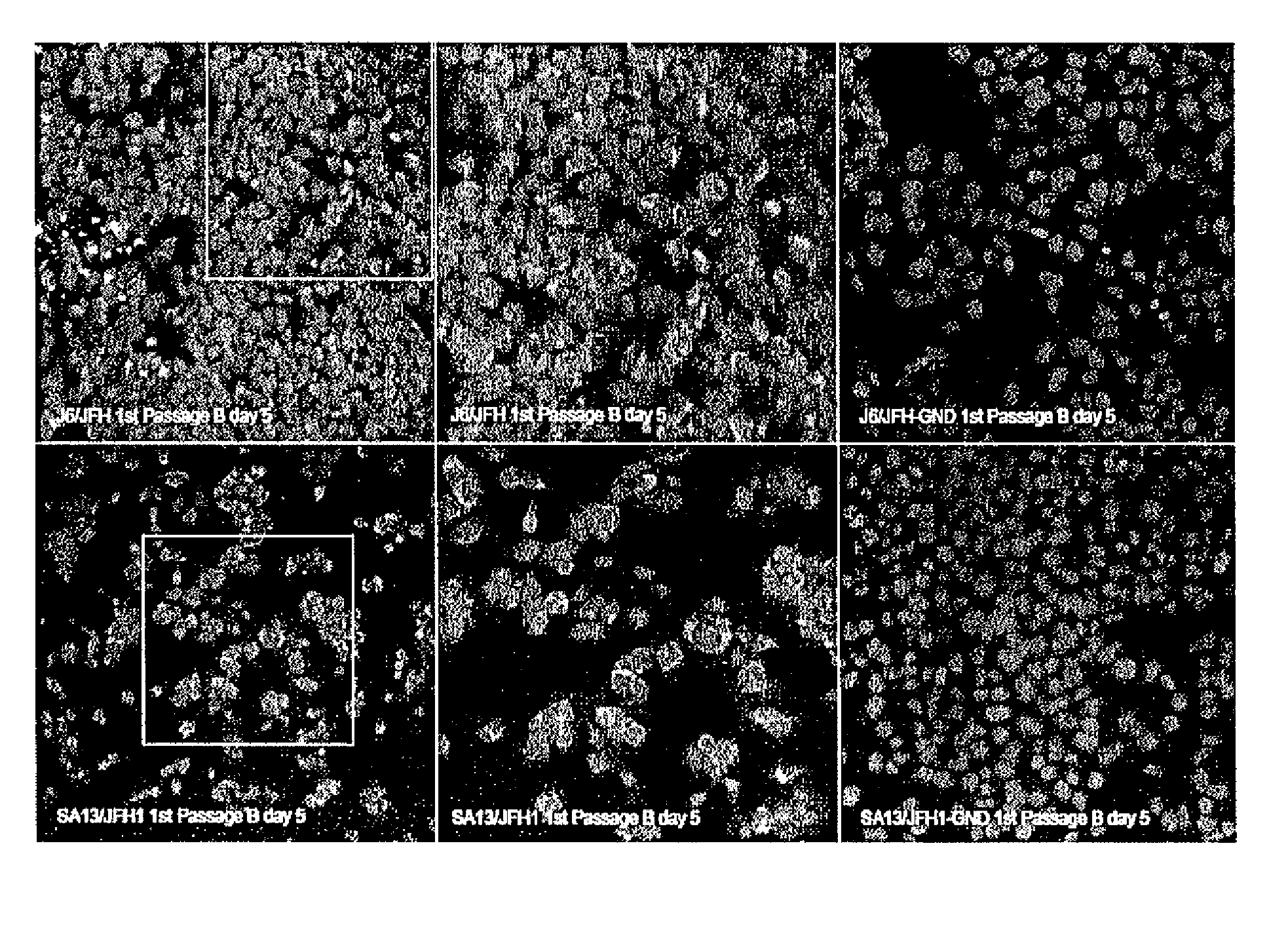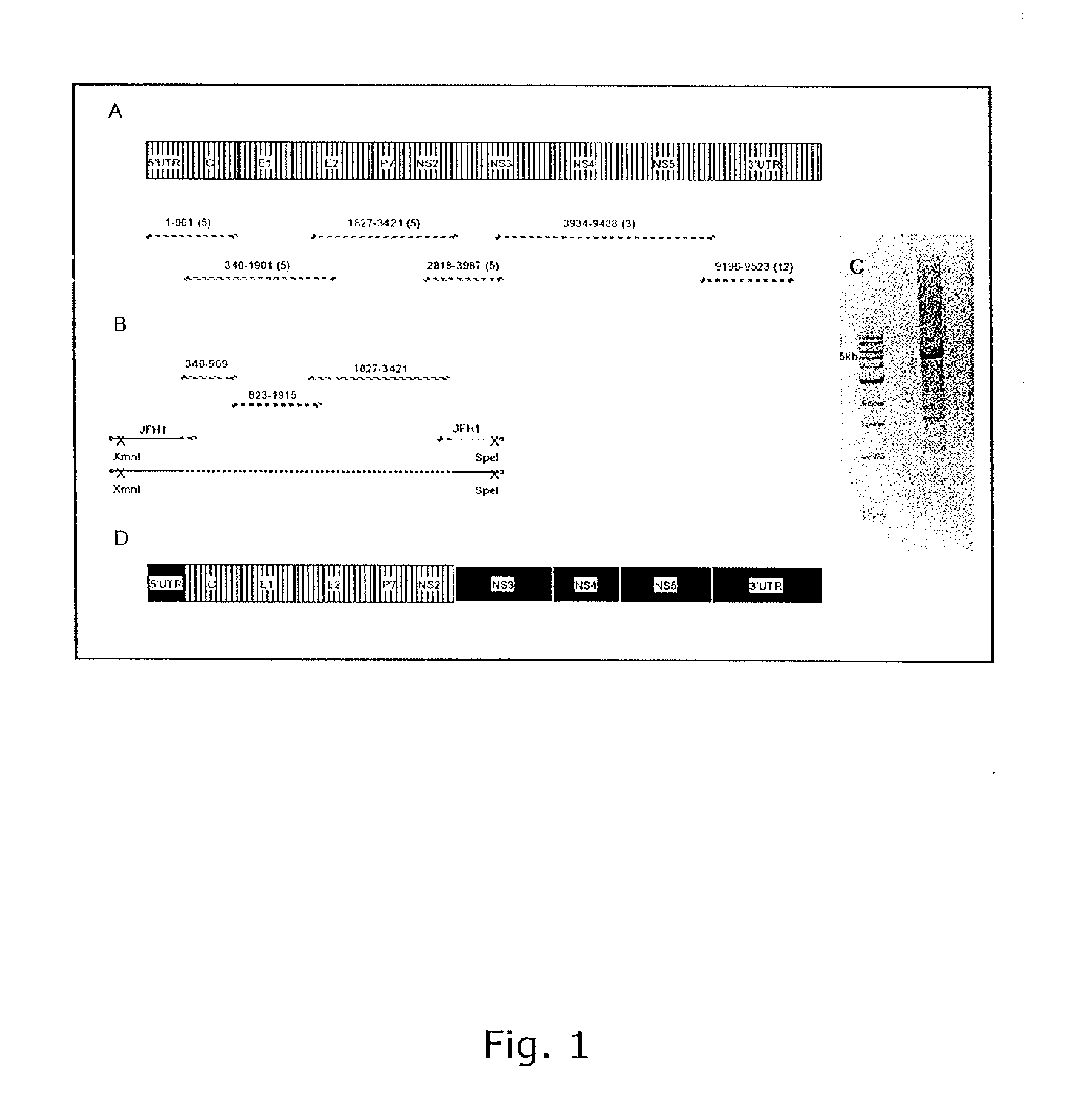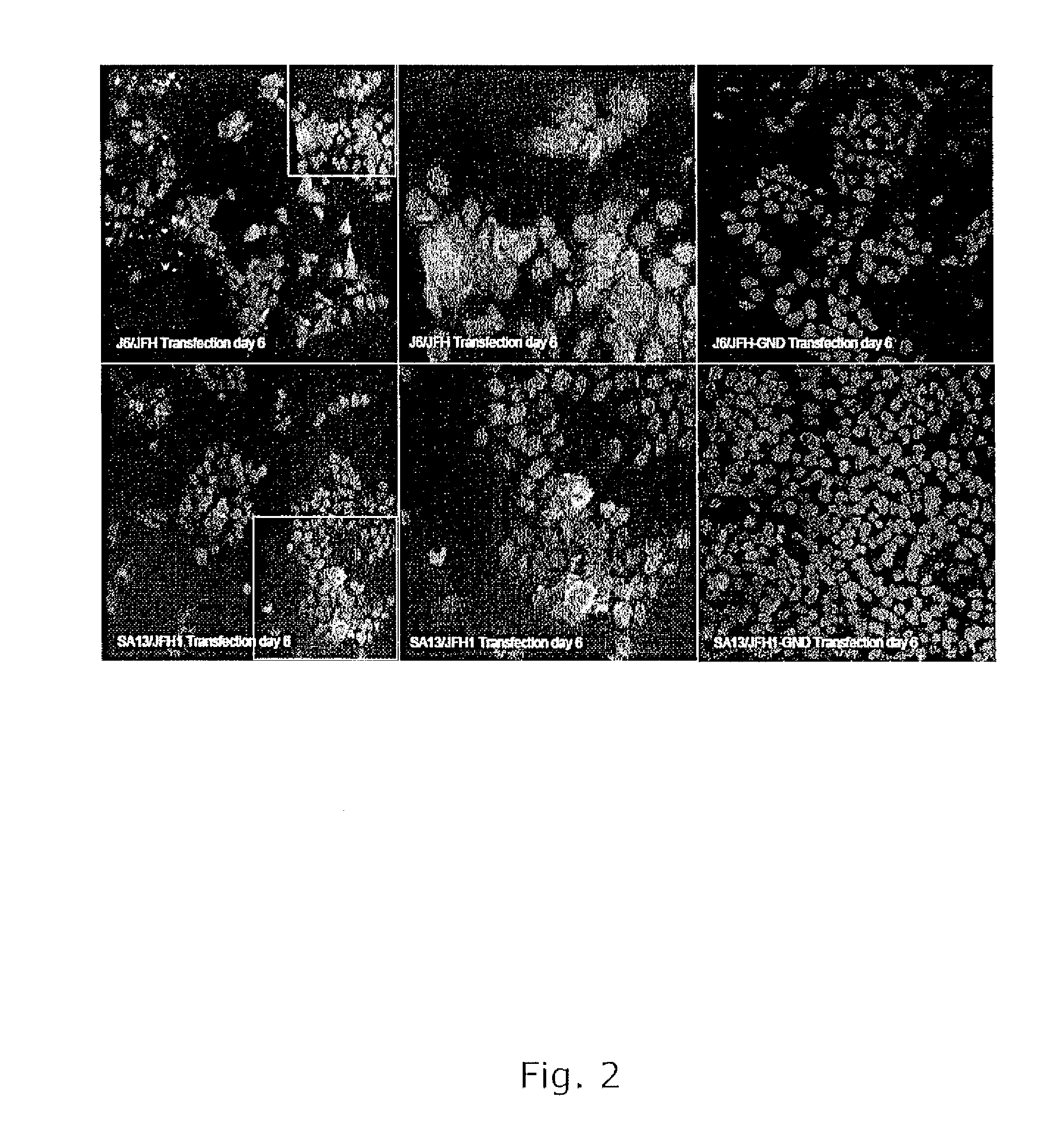Efficient cell culture system for hepatitis c virus genotype 5a
a cell culture system and hepatitis c virus technology, applied in the field of infectious recombinant hepatitis c genotype 5 viruses, can solve the problems of increased risk of liver cirrhosis, hepatocellular carcinoma, high cost of therapy,
- Summary
- Abstract
- Description
- Claims
- Application Information
AI Technical Summary
Benefits of technology
Problems solved by technology
Method used
Image
Examples
example 1
Cloning and Determination of the Consensus Sequence of the SA13 Genome
[0240]The consensus sequence of SA13 (nts.1-9523; numbers of nucleotide positions refer to full-length SA13), containing the ORF and all but the first 34 nucleotides of the 5′ UTR and the last 81 nucleotides of the 3′ UTR was determined.
[0241]HCV specific RT-PCR on RNA extracted from the chimpanzee genotype 5a plasma pool was used to amplify the near complete genome in 6 overlapping fragments (FIG. 1).
[0242]All 6 fragments were subcloned and 3 to 12 clones were sequenced and analyzed to determine the consensus sequence, which represents the most common nucleotide at each position among the clones analyzed. Heterogeneity was observed at 271 nucleotide positions (3%) in the ORF and at 86 amino acid positions (2.9%) of the polyprotein. These differences could be the result of errors introduced during PCR amplification although a polymerase with proofreading function was used or they could represent the quasispecies n...
example 2
Generation of Full-Length SA13 / JFH1 Consensus Clone
[0243]Until recently there was no reproducible cell culture system to grow HCV. Full-length genomes found to be infectious in chimpanzees did not show clear evidence of replication in cell culture (Bukh and Purcell, 2006). However, in 2005, it was reported that full-length RNA transcripts of a genotype 2a strain (strain JFH1) could replicate in Huh7 cells and produce infectious particles (Zhong et al., 2005; Wakita et al., 2005) and that a genotype 2a / 2a recombinant constructed on the backbone of JFH1 but with the structural genes (Core, E1, E2), p7 and NS2 from another 2a strain (strain HC-J6) could generate higher titers in Huh7.5 cells (Lindenbach et al., 2005). Thus a viable intergenotypic 5a / 2a recombinant was generated.
[0244]The pSA13 / JFH1 plasmid (SEQ ID NO 1) was constructed by inserting the structural genes (Core, E1, E2), p7 and NS2 of genotype 5a strain SA13 into pFL-J6 / JFH. As a result, only the nonstructural genes NS3, ...
example 3
Generation of Replication Defective Control Plasmid PSA13 / JFH1-GND
[0247]HCV can be rendered infection and replication deficient by introduction of a point mutation in the NS5B RNA polymerase active site, which results in the amino acid change GDD to GND (Lindenbach et al., 2005). The replication deficient pFL-J6 / JFH-GND and the cloned and sequenced 5-piece fusion products (see above) were digested with XmnI and SpeI, and the J6 part of the plasmid was exchanged with the SA13 Core through NS2. RNA transcripts of pSA13 / JFH1-GND were shown not to replicate in Huh7.5 cells.
PUM
| Property | Measurement | Unit |
|---|---|---|
| total volume | aaaaa | aaaaa |
| total volume | aaaaa | aaaaa |
| total volume | aaaaa | aaaaa |
Abstract
Description
Claims
Application Information
 Login to View More
Login to View More - R&D
- Intellectual Property
- Life Sciences
- Materials
- Tech Scout
- Unparalleled Data Quality
- Higher Quality Content
- 60% Fewer Hallucinations
Browse by: Latest US Patents, China's latest patents, Technical Efficacy Thesaurus, Application Domain, Technology Topic, Popular Technical Reports.
© 2025 PatSnap. All rights reserved.Legal|Privacy policy|Modern Slavery Act Transparency Statement|Sitemap|About US| Contact US: help@patsnap.com



